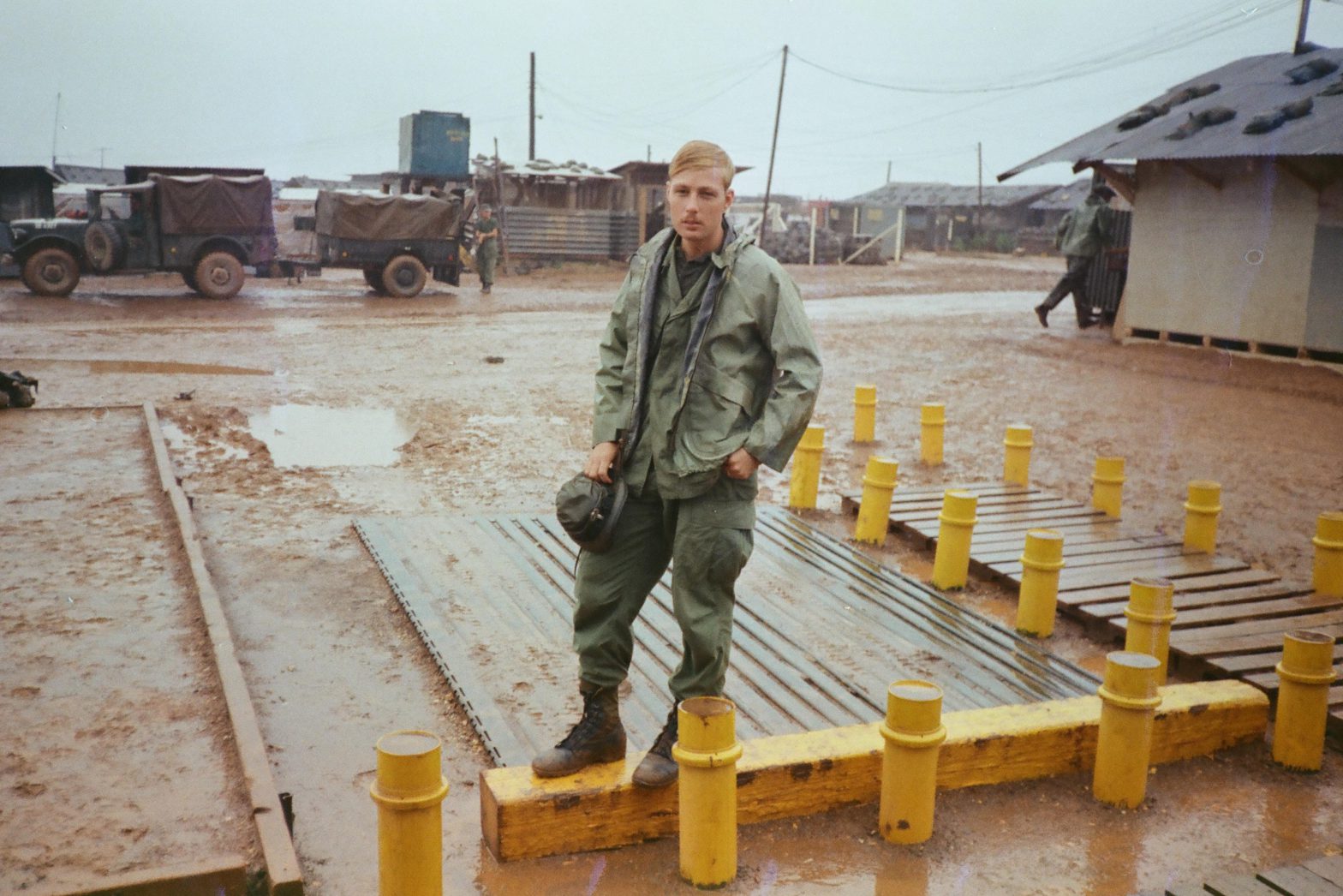
It was hot and humid with red dirt coloring my sweat.
My platoon was guarding one end of an old Special Forces airstrip that was overrun during the Tet Offensive two years earlier by thousands of NVA soldiers. We had returned in a massive air assault aboard dozens of Huey’s.
While teams were digging for the remains of Americans left behind during the horrific firefight in 1968, the Company Commander issued my orders. I would be taking my platoon on patrol east of the airstrip, deep in enemy territory to determine enemy activity.
After just three months of field experience in Vietnam as a Lieutenant, I was considered a “veteran.” I was with Bravo Company, 2/1 Battalion, of the 196 Light Infantry Brigade for the American Division that was organized at Fort Devens, Massachusetts. Now we were just a few miles from Laos and at the entrance to the Ho Chi Minh Trail.
Checking the maps, this was not going to be easy. We needed to have all the right equipment for such an operation. It would load down each man. The terrain involved steep hills, thick jungle, rivers and streams.
Early the next morning, we departed the perimeter in a single file into the jungle. We hiked downward several hundred feet to a river that was wide and in sections quite deep.
I agonized over the prospect of being ambushed while my men were crossing the river. We would be sitting ducks. Fortunately, we picked an area where the river’s depth was not over our heads.
Loaded down with heavy rucksacks, ammo, weapons and more, we used a thick rope to keep from falling under. Later, movement in tributary streams would also be dangerous but they would be a fast move considering hacking through thick jungle was exhausting.
On the first night, we set up Claymore mines with trip wires (called Mike Alphas or mechanical ambushes) on the trails leading past us. We tried to sleep, but just before dawn, the explosion was deafening in the quiet jungle setting.
We took pictures of the young NVA soldier, stripped the body of weapons and papers, and left on patrol with our eyes wide open and nerves on end.
For the next several days we would discover signs of the enemy everywhere we went.
We marched silently over treacherous terrain, took short breaks due to the heat, and set up Mike Alphas at night. More explosions would rock us. Over these days and nights, we had caught half a dozen unwitting enemy soldiers too eager to move fast down the trails, including one Chinese officer.
At one point, in an unusual area where the jungle was not so thick, massive explosions were hitting so near us that shrapnel pierced the M-16 of one of my soldiers as we were running out of the kill zone. As it happened, it was friendly fire from an ARVN (South Vietnamese) artillery battery. I was yelling in the radio handset to get them to stop.
That night, after calling in my position coordinates and double checking that they knew where we were, I remember squinting in the darkness to see the bugs crawling around me. I hated leeches as you could not feel them until they filled up with your blood. I doused myself in “bug juice,” the Army’s incredibly effective insect repellent.
I could not see the night sky. The jungle canopy ensured total blackness. We would not dig in this night. We just slept on the ground with the platoon in a circular position with our fatigues soaked from sweat and using our rucksacks as pillows.
“Noise discipline” was obvious and needed no reminder from me.
I remember wondering how alone we were even with 22 men in my platoon. I worried what would happen if we ran into a hundred or more enemy. We were a day or two away from the airstrip with a river between us.
We had found and mapped the trail locations and captured weapons and documents that might be helpful to headquarters. It was time to return.
While we were gone, over 20 enemy sappers attacked the airstrip. With satchel charges on their backs, they tried to sneak past the concertina surrounding the 155mm howitzers. As the enemies rushed toward the artillery positions, the big guns opened up and shot point-blank into the attackers. It was a slaughter.
Apparently we had killed some of the NVA who were rushing to join their team for the surprise morning attack on the artillery battery set up next to the airstrip, near the positions held back in 1968.
I saw the pictures of a front-end loader with its bucket filled with enemy bodies for a mass burial. I was thankful it was not Americans in that bucket.
War is about killing and surviving. As brothers in arms, we lived to protect one another and survive another day.
Unfortunately, some would come back to an unwelcoming world, some with wounds that did not heal.
I am grateful most of my men made it back safely.
Such are the memories on Memorial Day and every day.

This article originally appeared on Crestview News Bulletin: Combat memories on Memorial Day
